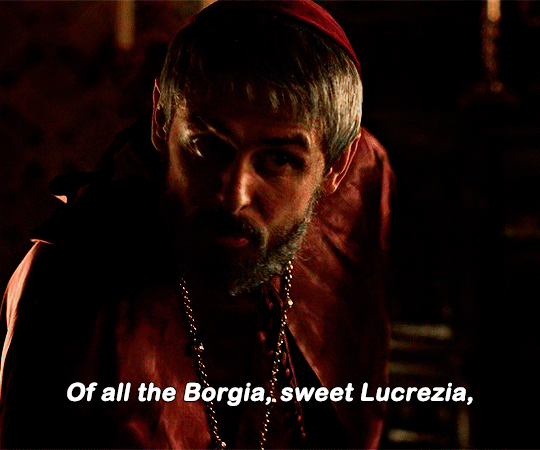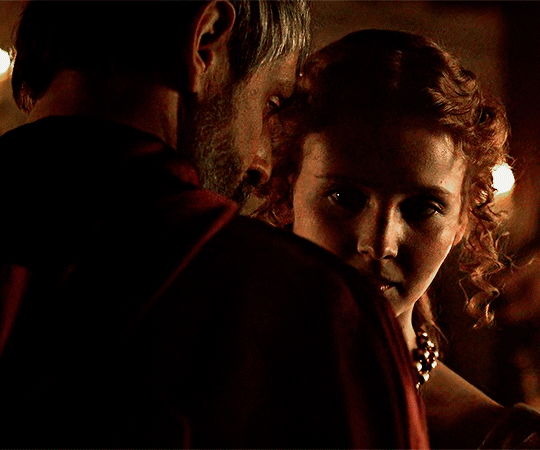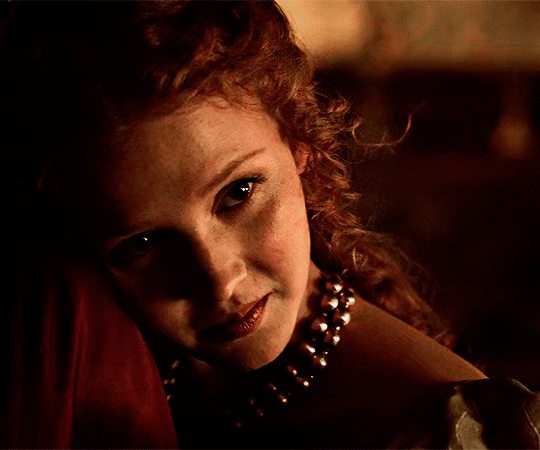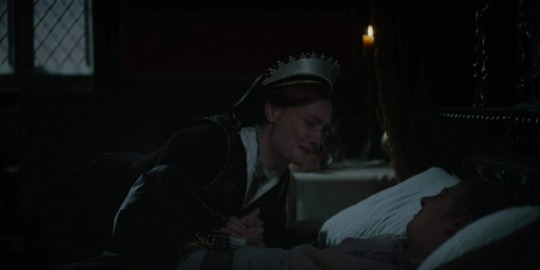#duchess of ferrara
Explore tagged Tumblr posts
Text

Archduchess Barbara, Duchess of Ferrara
Artist: Francesco Terzio (Italian, 1523-1591)
Object: Painting
Date: 1565
Collection: Kunsthistorisches Museum, Vienna, Austria
Archduchess Barbara of Austria
Barbara of Austria (30 April 1539 – 19 September 1572), was an Archduchess of Austria as a member of the House of Habsburg and by marriage Duchess consort of Ferrara, Modena and Reggio during 1565–1572.
#portrait#full length#standing#archduchess barbara#duchess of ferrara#duchess consort of modena and reggio#holy roman empire#woman#costume#table#interior#handkerchief#francesco terzio#italian painter#house of hasburg#european art#artwork#painting
10 notes
·
View notes
Text
‘The Marriage Portrait’ by Maggie O’Farrell
Genre: Adult Fiction – Historical Published: 2022 Format: Paperback Rating: ★★★★★ Frankly I couldn’t fault this book. It was engaging to read, and the characters came across as real people which is really important when writing historical fiction. Don’t confuse Lucrezia d’Medici with Lucrezia Borgia, though the two are related – Lucrezia d’Medici (the subject of this novel) was married to the…

View On WordPress
#Book#Book Review#Duchess of Ferrara#Fiction#Historical#History#Italy#Lucrezia d&039;Medici#Lucrezia de Medici#Maggie O&039;Farrell#Novel#Renaissance Italy#Review#The Marriage Portrait
0 notes
Text

Lucrezia de’ Medici (1545–1561) (c. 1560), by Alessandro Allori (Italian, 1535–1607), oil on panel, 32 1/2 x 24 3/4 inches (82.6 x 62.9 centimeters), The North Carolina Museum of Art, Raleigh
#lucrezia de’ medici#alessandro allori#painting#my upload#oil on panel#north carolina museum of art#raleigh#16th century#portrait#mannerism#house of medici#duchess consort of ferrara modena and reggio
30 notes
·
View notes
Text
So, erm, I finished reading The Marriage Portrait by Maggie O’Farrell. Erm. Oh my goodness. Five stars. Possibly my favourite book of this year so far. I think I’m really gonna need a minute to let this settle oh my goodness. Historical fiction isn’t usually my go to but this really really just… I don’t even have the words it was just beautiful. This was my introduction to Maggie O’Farrell and I definitely see myself reading more of her work. Erm. Wow. Highly recommended
#the marriage portrait#Lucrezia de Medici#lucrezia d’Este#Alfonso d’Este#Alfonso II d’Este#duke and Duchess of Ferrara#my last duchess#maggie o'farrell#robert browning
4 notes
·
View notes
Photo




Tomb of Eleanora Branciforte di’Aragona with figures of Faith, Charity, and Hope, Carrara marble, 1525, attributed to Giovan Battista Mazzola
Museo Regionale di Palazzo Bellomo, Syracuse, Sicily
Photos by Charles Reeza
#marble sculpture#stone carving#late Renaissance art#Catholic stuff#Italy#Princess of Naples#first Duchess of Ferrara#Sicilia#Siracusa#Ortigia#the top looks a bit like Jesus rising from a bathtub
6 notes
·
View notes
Text







"Lucrezia received the news of her mother’s death while she was acting as regent. After giving orders that no one was to speak of it to her, she sought refuge in San Bernardino. “She will not speak of it in case she disturbs the state. She will wear her mourning alone,” said one of the courtiers. The loss of her mother was painful, not because she had been close to her, but because she hadn’t. “Your happy and unhappy mother,” Vannozza had signed herself. Happy to have a daughter who was Duchess of Ferrara, unhappy to have had to give her up when she was little more than a baby, and unhappier still to have outlived three sons. All this Lucrezia would understand as she reflected upon her mother’s life. But she could not mourn her as she had mourned Alexander, for she had never really known her and had so few memories on which to base her grief. What she must have mourned instead was the passing of the last member of her original family and the feeling of unutterable aloneness this gave her." — Emma Lucas, Lucrezia Borgia (2014)
#tv always portrays her as having a close relationship with her even going as far as to depict her as the favorite child (which i love)#tried to find positive records about lucrezia/vannozza but no luck. that's why i never wanted to post it tbh#most bios tend to avoid her relationship w/lucrezia. sarah bradford was overly harsh about her almost as she was with juan (yawns)#lucrezia borgia#vannozza cattaneo#the borgias#perioddramaedit#theborgiasedit#tvedit#cinemapix#tvarchive#weloveperioddrama#ladiesofcinema#femaledaily#femalegifsource#perioddramasource#televisongifs#dailyflicks#tvfilmsource#by jen
286 notes
·
View notes
Text




— And when my husband ascends to the ducal throne, I will have his ear, and you will know no better friend than the Duchess of Ferrara.
#tvedit#perioddramaedit#borgiaedit#borgia#lucrezia borgia#giuliano della rovere#userclayy#userhayf#usermyr#by tha
256 notes
·
View notes
Text

Two or three of her ladies-in-waiting were pretty. One danced well and another, Lucrezia’s cousin Angela Borgia, was charming. Without her knowing, El Prete had picked her as his favorite. Angela’s charm would be the source of great tragedy in Ferrara; even then it must have been one of the reasons for the nightly visits Alfonso’s brothers made to Lucrezia’s palace.
She was the illegitimate daughter of Guillem Ramon de Borja and Sanoguera, son of Otic de Borja y Montcada and his wife Violant Sanoguera. Her mother was Isabel de Montcada. She was also a niece of Cardinal Rodrigo Borgia, later Pope Alexander VI .In her youth she lived in Rome alongside her cousin Lucretia Borgia, whom she accompanied to Ferrara when she married Alfonso I d'Este, Duke of Ferrara
Considered as a woman of great beauty, elegance, romantic, with an exquisitely feminine personality. She was absolutely trustworthy friend, confidant of the innermost secrets, favorite companion and assistant to her favorite cousin Lucretia. She won the praise of men of letters as Diomede Guidalotti who dedicated two sonnets to her, and even Ludovico Ariosto dedicated the last canto of Orlando Furioso to her. Pietro Bembo idealized her as an "angel that can pray for me." On 1 August 1504, in the dedication of his "Gli asolani" to the duchess Lucrezia Borgia refers back to his Angela, indicating that Lucrezia's cousin and maiden is "the dear and gallant Madonna Angela Borgia".
#perioddramaedit#history#angela borgia#angela borja#borgia#cortegiania#lucrezia borgia#the borgias#lily james#donne della storia#donne nella storia#donneitaliane#donne italiane#women of history#renaissance women#italian renaissance#women of renaissance#renaissance italy#renaissance#rinascimento#lilyjamesedit#otoc de borja#cesare borgia#rodrigo borgia#isabel de montcada#giulio d'este#ippolito d'este#ferrara#women in history#pietro bembo
78 notes
·
View notes
Text
They could never make me hate you and I’ll always fight and advocate for you:




1. Catherine of Aragon, Queen of England (my beloved) by Michael Sittow (c. 1515-16)
2. Mary I Tudor, Queen of England by Hans Holbein the younger (c. 1536)
3. Lucrezia Borgia, duchess of Ferrara by Dosso Dossi (c. 1519)
4. Queen Juana I of Castile by Juan de Flandes (c. 1500)
#Catherine of Aragon#queen mary of england#lucrezia borgia#joanna of castile#Anne Boleyn/Elizabeth apologists DNI
7 notes
·
View notes
Text

Mary I's Fight For The Throne
10th February 1553 - Mary and King Edward meet
On the 10th February 1553 Mary rides from her townhouse of Saint John's in Clerkenwell down Fleet Street to see her brother King Edward VI in Westminster. She had arrived in London on the 6th, but that night Edward was "attacked by a fever caused by a chill he had caught". 1 Her visit was therefore delayed three days to allow him time to recover.
She is accompanied to court by "a great number of lords and knights", the "duchess of Suffolk and Northumberland [...] and many more ladies and gentlewomen." 2 She is met at the outer gate by John Dudley, the Duke of Northumberland, Henry Grey, the Duke of Suffolk, and many more earls, knights and gentlemen, who do "duty and obeisance to her as if she had been Queen of England." 3
After dismounting, she is led up into the chamber of presence, and into the King's bedchamber, where the King "met her and saluted her." 4 Edward "received her very kindly and graciously, and entertained her with small talk, making no mention of matters of religion." 5
After talking, she leaves "accompanied by several gentlemen and ladies, and notably by the Duchesses of Suffolk and Northumberland." 6
While in London, she meets the Imperial ambassador, Jehan Scheyfve, who informs her of a rumour about the Privy Council betrothing her to Alfonso d'Este, eldest son of the Duke of Ferrara. Mary shows "great astonishment and declared it seemed very strange to her that anyone should have concerned himself with her, especially on such a business, because she had so little inclination to marriage." 7
Sources:
1. Spanish State Papers, 17th February 1553
2. Diary of Henry Machyn, February 1553
3. Spanish State Papers, 17th February 1553
4. Diary of Henry Machyn, February 1553
5. Spanish State Papers, 17th February 1553
6. Spanish State Papers, 17th February 1553
7. Spanish State Papers, 17th February 1553
18 notes
·
View notes
Note
i feel like sam likes the poem “my last duchess” by robert browning (i love that poem sm ugh) but like the didn’t know the lore behind it but u meet him and it isn’t until like way after yous met and unbeknownstly fell for each other that he finds out u also like the poem and u tell him the lore of how it was set in 1564 and is based off of duke alfonso II who was the duke of ferrara in italy and how it’s set 3 years after his first wife lucrezia de’medici died under suspicious circumstances after marrying alf and he js grabs ur face and kisses u after u drop that lore and confesses his love and u guys make out after that
also all that lore is true: my credentials: js trust me bc im the source🙏🙏
no but fr i studied the poem last year n genuinely loved it
-💽
crazy insane people way to kiss someone for the first time in the best fucking way ever like. so nerdy and dark academia core LOL i love it... need him to do that to me. he just thinks you're really hot what can i say???? kissing sam bc poems (and you love each other) <333 absolute gold hehe
3 notes
·
View notes
Text

Lucrezia de’ Medici (1545–1561)
Artist: Alessandro Allori (Italian, 1535-1607)
Date: 1560
Medium: Oil on panel
Collection: North Carolina Museum of Art, Raleigh, NC, United States
Biography
Lucrezia de' Medici (14 February 1545 – 21 April 1561) was a member of the House of Medici and by marriage Duchess consort of Ferrara, Modena and Reggio from 1558 to 1561.
Married to the intended husband of her elder sister Maria, who died young, her marriage was short and unhappy. The Duchess died of pulmonary tuberculosis, but almost immediately after her death there were rumors that she had been poisoned on the orders of her husband. That suspicion inspired the English poet Robert Browning to create a dramatic monologue in verse "My Last Duchess" (1842).
#portrait#duchess consort of ferrara#female#standing#republic of florence#house of medici#house of este#costume#painting#alessandro allori#italian painter#16th century painting#oil on panel#italian culture#italian history#pearl necklace#artwork#european art
18 notes
·
View notes
Text
Book Review - ‘The Marriage Portrait’ by Maggie O’Farrell
Frankly I couldn’t fault this book. It was engaging to read, and the characters came across as real people which is really important when writing historical fiction. Don’t confuse Lucrezia d’Medici with Lucrezia Borgia, though the two are related – Lucrezia d’Medici (the subject of this novel) was married to the grandson of Lucrezia Borgia (Alfonso d’Este). It’s strange to think that while this…

View On WordPress
#16th Century#Alfonso Duke of Ferrara#Book#Book Review#Ferrara#Fiction#Florence#Italy#Lucrezia D&039;Medici#Lucrezia de Medici#Lucrezia Duchess of Ferrara#Maggie O&039;Farrell#Marriage Portrait#Novel#Renaissance#Renaissance Italy#Review#The Marriage Portrait
0 notes
Note
Would Duke Alfonso II of Ferrara listen to Will Wood? (*not* a historical figure but the main character in hit poem My Last Duchess by Robert Browning)
Thank you.
But anyway, Duke Alfonso II of Ferrara from My Last Duchess would only maybe listen to Will Wood.

2 notes
·
View notes
Text
So fun fact My Last Duchess (Robert Browning) is one my favourite poems and I am currently reading The Marriage Portrait (Maggie O’Farrel) and quickly falling in love with it and one of my favourite songs is Portrait of a Dead Girl (The Last Dinner Party) and I don’t think you understand how I can never recommend enough times that if you love one of these things individually you should check out the others and if you don’t know any of them you should introduce yourself to them because *screams*
(Btw for added context The Marriage Portrait and My Last Duchess are both inspired by the same historical figures Duke Alfonso II d’Este (fifth Duke of Ferrara) and Duchess Lucretia do Cosimo d’Este (née de’ Medici). Lucretia was much younger than him and died at 16, within the first year of their marriage. Her official cause of death was putrid fever but it has been popular theorised that Alfonso poisoned her. My Last Duchess describes the painting that Alfonso had commissioned of her, known as her marriage portrait. I included Portrait of a Dead Girl in this because the themes are very similar and it makes me think of her when I listen to it. ALSO: I’m not classing this as spoilers for the book because it is real history and the book tells you what happens to Lucretia all the way through the beginning including in the epigraph, but if anyone thinks I should tag this as spoilers let me know and I’ll add it)
#it’s only today that I’ve realise portrait of a dead girl may be inspired by the same context lol#and now I’m screaming it at the top of my lungs whilst watching the rain#and nearly crying for Lucretia my love#you know#normal things#dk rambles about random stuff#poetry#my last duchess#robert browning#poems#portrait of a dead girl#the last dinner party#prelude to ecstasy#the marriage portrait#maggie o'farrell
28 notes
·
View notes
Text
The House of Borgia: End of a Dynasty (Part 4)
| Part 1 | Part 2 | Part 3 | References |
While the Conclave elected Pope Pius III, Cesare was occupied trying to find allies. His old friend, King Louis XII, came to his aid, issuing a statement to Romagna that their Duke was "alive and well and the friend of the King of France". Not only Cesare had the French's support, but he also counted on Ferrara's troops to protect his claim on Romagna, as Lucrezia had persuaded her husband and father-in-law to fight in her brother's defence.
Once Romagna was relatively stable and Cesare felt better, he returned to Rome, where he met with Pius III and had his position as Captain confirmed. Not only that, but due to Cesare's clever theft of the Papal Treasury, Pius III was left financially dependent on him. By all accounts, Cesare's life would continue on exactly as it had under Rodrigo's papacy.
Unfortunately for Cesare, Pius III died twenty six days after being elected Pope. The next Pope, Julius II, had been an old enemy of Rodrigo, and upon his election, was swift to force the Borgias to surrender their lands in Romagna, even ordering the new Captain of the Papal Forces to arrest Cesare when he refused to comply.
After Cesare's arrest, Julius decided to put him on trial and encouraged those wronged by him to file claims for financial compensation. Not only that, but Julius also charged Cesare with the murder of two cardinals, whose deaths were believed to have been arranged by Rodrigo. These trials never occurred, as in April 1503, Cesare was released in exchange for his remaining territories in Romagna. Once free, he departed for Naples, which was under Spanish rule and where the rest of the Borgias had taken refuge, with the exception og Lucrezia, who remained with her husband in Ferrara. Hardly had Cesare set foot in Naples when he was imprisoned again, as King Ferdinand of Spain wished to hand Cesare back to Julius II in exchange for an alliance against the French.
Cesare would remain imprisoned in Spain until 1506, when he managed to escape prison and seek refuge with his brother-in-law, Juan d'Albret, King of Navarre. Taking advantage of a civil war wrecking through Navarre, Cesare offered his services as a military leader to help King Juan reclaim the kingdom. This would prove to be Cesare's downfall, as on 12 March 1507, he was killed in battle by the revolting troops.
Six weeks would pass until the news of his death reached Lucrazia, who was, by this point, the Duchess of Ferrara. It's said that upon learning of her brother's fate, she locked herself in her room and began to wail his name. In 1508, Lucrezia would finally give birth to a son by d'Este, named Ercole II, who would be followed by Ippolito in 1509, Leonora in 1515, Francesco in 1516 and Isabella Maria in 1519. This last birth proved itself to be terribly complicated and claimed the lives of both mother and daughter.
Rodrigo, due to being a pope, was given a tomb in the Basilica di San Pietro, near his uncle's resting place. In 1586, Rodrigo's bones were dug up and placed on a casket alongside Alfonso's, which, in 1610, was taken to Santa Maria in Monserrato degli Spagnoli, where the casket was set aside and forgotten about until 1864, when it was unexpectedly found. It would take until 1889 for the joined remains to be once again given a proper tomb, with a stone memorial being carved in honour of Alfonso and Rodrigo.
Cesare was buried in a tomb by Juan d'Albret in the church of Santa Maria of Viana, in front of the high altar. His tomb, however, was destroyed by the bishop of Calahorra some time later, with Cesare's body being dumped in a hole outside the church. In 1945, the remains were exhumed and an autopsy was performed. The remains then bounced from place to place until finally being reburied in the church in 2007.
Lucrezia, meanwhile, was buried in Monastero del Corpus Domini, in Ferrara, alongside the other Dukes and Duchess of Ferrara. In time, Alfonso d'Este joined her, as did her children and grandchildren
Thus, the era of Borgia dominance came to a close. Although the family continued to hold titles in the subsequent years (most notably, Rodrigo's great-grandson, Francis Borgia, was canonized as a saint) they never reclaimed the formidable power they once commanded during Rodrigo's papacy. Yet, Rodrigo, Cesare, and Lucrezia did not fade into obscurity. Their legacy endured, capturing the public imagination for centuries to come. Indeed, as the chronicles of their lives spread through the courts of Europe, their reputation grew, blending reality and legend. Their lives continue to fascinate audiences, inspiring countless reinterpretations in literature, drama, and visual media even to this day.
4 notes
·
View notes